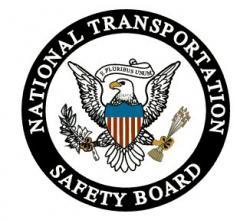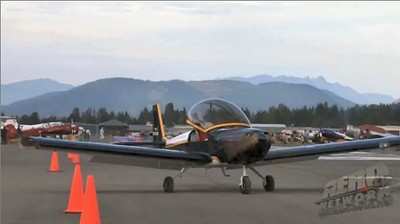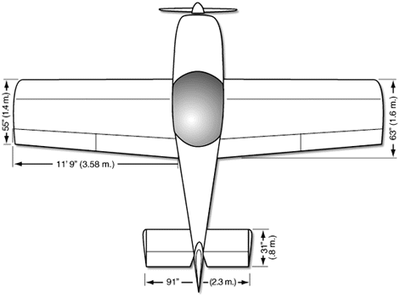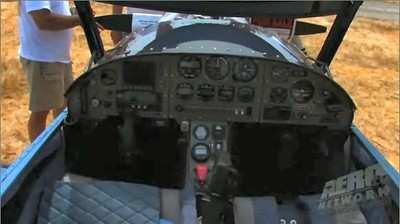Another In-Flight Wing Seperation Reinforces Growing
Concerns
 As previously noted on ANN, another
Zodiac CH-601 series (the subject of an NTSB grounding
recommendation to the FAA seven months ago, until a flight
control problem could be corrected), was involved in another fatal
accident last week.
As previously noted on ANN, another
Zodiac CH-601 series (the subject of an NTSB grounding
recommendation to the FAA seven months ago, until a flight
control problem could be corrected), was involved in another fatal
accident last week.
On November 6, 2009, a Zodiac CH-601XL, an experimental
amateur-built airplane, was destroyed as a result of an in-flight
breakup near Agnos, Arkansas, killing the pilot -- who was the sole
occupant. The debris field was scattered over an area more than 600
feet long. Both wings had separated from the fuselage
in-flight.
In April 2009, the NTSB called on the FAA to ground the Zodiac
CH-601XL after the Safety Board linked six accidents involving that
aircraft model to aerodynamic flutter, a phenomenon in which the
control surfaces and wings of the airplane can suddenly oscillate
and lead to catastrophic structural failure. Those accidents killed
a total of ten people. Preliminary investigation of the November 6
accident in Arkansas reveals a failure mode similar to that seen in
the earlier crashes.
The Safety Board's urgent recommendation to the FAA was to
"prohibit further flight of the Zodiac CH-601XL, both special light
sport aircraft and experimental, until such time that the FAA
determines that the CH-601XL has adequate protection from flutter."
The FAA replied in July that they lacked "adequate justification to
take immediate certificate action to ground the entire
fleet."
The Zodiac is available as a ready-to-purchase airplane
(classified as a special light sport aircraft), which is
manufactured by Aircraft Manufacturing and Design, LLC, and as an
amateur-built plane from a kit (classified as an experimental
aircraft) available from the designer, Zenith Aircraft Company.

On November 7, one day after the accident in Arkansas, the FAA
issued a Special Airworthiness Information Bulletin strongly
recommending that all owners and operators of Zodiac CH-601XL/CH650
airplanes comply with a Safety Alert/Safety Directive issued by the
manufacturer, Aircraft Manufacturing and Design, LLC. The Safety
Alert/Safety Directive requires all owners of special light sport
aircraft models to make structural modifications to the airplane
and add aileron counter-balances before further flight. Since the
directives of the manufacturers of special light sport aircraft
must be complied with, those aircraft not in compliance are
effectively prohibited from further flight.

CH-601 XL File Photo
The designer, Zenith Aircraft Company, has asked the owners of
the kit-built experimental airplanes to make the same
modifications, but there is no requirement that the modifications
be completed before further flight is attempted.

"We are pleased that the FAA and the manufacturer have acted on
the safety-of-flight issues that we identified with the Zodiac
special light sport airplane. We are troubled, however, that the no
modifications are required on the amateur-built planes," said NTSB
Chairman Deborah A.P. Hersman. "We are very concerned that a lack
of required compliance may lead to more accidents like the one
in
Arkansas, and others we've already seen," she said.

CH-601 XL File Photo
Zenith's Christ Hentz has recommended an aggressive series of
upgrades, via an 'Upgrade Package' to "over" correct
potential issues in the aircraft. "The past two years have been
challenging for the CH 601 XL community around the world. As we all
know, a number of accidents have occurred over the span of a few
years for which no common cause has been determined. This lack of a
“smoking gun” has caused all kinds of conjectures
and wild guesses as to probable cause, and each time a new 'theory'
or 'solution' is proposed, I and numerous engineers spend long
hours trying to validate or rebuke the latest round of speculation.
To this date, after thousands of man-hours of investigations,
multiple design reviews and an unheard-of amount of testing, the
accidents in question still do not share a common cause. In
offering this 'Upgrade Package' I have had to set aside my own
professional opinion (that the design is sound) as well as legal
counsel’s advice in order to provide builders, owners and
pilots the 'fix' that they have been asking me for. With these
upgrades (my '180º shift'), the safety margins of key airframe
components have been dramatically increased…" said
Heintz.
The Safety Board's investigation of the November 6 accident is
on-going.
 ANN's Daily Aero-Linx (04.30.25)
ANN's Daily Aero-Linx (04.30.25) ANN FAQ: Turn On Post Notifications
ANN FAQ: Turn On Post Notifications Classic Aero-TV: Agile Aeros Jeff Greason--Disruptive Aerospace Innovations
Classic Aero-TV: Agile Aeros Jeff Greason--Disruptive Aerospace Innovations Aero-News: Quote of the Day (04.30.25)
Aero-News: Quote of the Day (04.30.25) ANN's Daily Aero-Term (04.30.25): Expedite
ANN's Daily Aero-Term (04.30.25): Expedite







